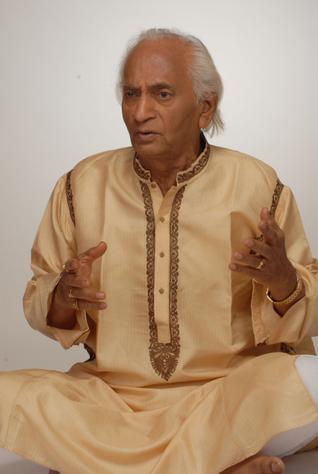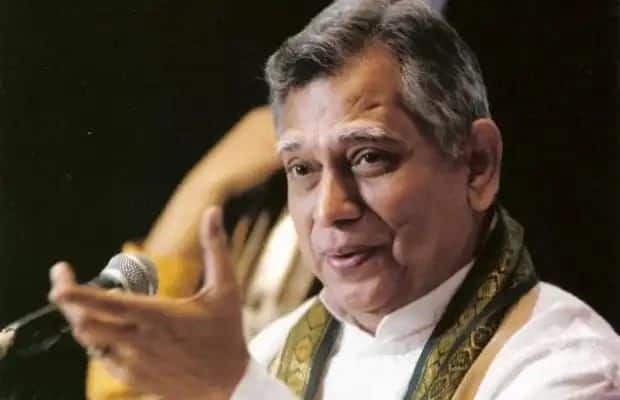“Art is art for all of us. It is high time that artistes, organizations which give them a platform and other stakeholders come together and chalk out an action plan.” So spoke Dr. Sonal Mansingh, Padma Vibhushan and Rajya Sabha MP at a recent Webinar on ‘Economics of Performing Arts’, hosted by the Indira Gandhi National Centre for the Art (IGNCA) on Art and Culture in today’s Coronavirus affected scenario.
COVID-19 is undoubtedly going to have an indelible impact on the country’s art and culture scene. Amongst the worst-hit, besides migrant labourers, are the folk, tribal and casual artists whose livelihood depended on day to day performances and cultural shows. The situation is particularly grim for performing artists in general and all their support staff.
The Webinar was one of its kind where along with Dr. Sonal Mansingh, the other panelists — Bansi Kaul, an eminent theatre personality, Viraf Sarkari, co-founder and Director Wizcraft International Entertainment Pvt Ltd, Albert Almedia, COO Live Entertainment, Book My Show, and Arjun Pande, Founder Delhipedia & filmmaker — gave valuable inputs on the future of the Arts and the emerging trends in the post-COVID scenario.
They discussed the economic condition of the artiste community, their sustenance on digital platforms and probable collaborations among the stakeholders to ensure their sustenance, growth and development. Dr. Sachchidanand Joshi, Member Secretary IGNCA, moderated the session.
The biggest challenge in the aftermath of COVID-19 appears to be that the entire artiste community is now forced to rethink and reinvent their strategies — both in terms of how they perform and how they teach. They have come to acknowledge the fact that awareness and expertise in the use of technology are crucial in these unprecedented times. In areas like music and dance in particular, those who are not tech savvy will find the going difficult.
Matching technology and tradition
This is a totally new scenario for Indian performers and teachers, especially musicians. The digital world has always been more accessible to international musicians than to Indian musicians, for a number of reasons. This is especially so, because of its time tested tradition of Guru-Shishya Parampara, where for centuries, the performing arts have been taught orally by the teacher to the student and transmitted from one generation to the next.The nuances of Ragdari Sangeet (music of the Raga), for instance, needs to be taught directly by the teacher to the student.
Hindustani Classical Music Gharanas
In the 'gharana' tradition. a major personality who had the voice, presence and that irrepressible quality gave ‘Seena-b-Seena Taalim’ (one to one lesson) to the Shagird (disciple) that confounded comparison. Thus, we have the Patiala Gharana on account of Ustad Bade Ghulam Ali Khan, the Agra Gharana because of Ustad Faiyaz Khan, and the Gwalior Gharana because of a whole stream of men of varying power and presence, but each leaving behind indelible memories of their art and their passionately loyal and gifted Shishyas. Classical Indian dance was also taught in the same manner on a one to one basis.
Pt L K Pandit, the doyen of the Gwalior Gharana and a traditional Guru sounded depressed when asked how he was dealing with the present situation. Pandit confessed, “These are difficult times. Neither can I go out for performances nor can I teach because my disciples can’t come home to learn.”

Neither can I go out for performances, nor teach, says a dispirited Dr. L K Pandit.
Dr Vidyadhar Vyas, a renowned classical vocalist of the same Gharana, on the other hand, doesn’t mind performing on a digital platform. “We have been performing for imaginary audiences earlier also while singing for recording companies or in the studios of All India Radio (AIR),” said Dr. Vyas. “Performing on digital platforms or teaching through technology platforms like Skype have already started. We will have to adjust with the new normal.”
“The lockdown has allowed me a deeper connection with my music. With few distractions and no travelling, I’m able to meditate on music in a much more profound manner. Despite a lifetime with Sarod, I see many fresh avenues opening up because I’m more mindful than ever.”
Ustad Amjad Ali Khan, Sarod maestro
Delhi, as the country’s capital, is home to a number of national akademies like the Sangeet Natak Akademi (SNA), the Lalit Kala Akademi, Sahitya Akademi, the National School of Drama (NSD) and all of them, including the artistes they cared for, have been hit hard by the pandemic. Cultural shows and festivals of music, dance and dramas stand cancelled indefinitely, with no indication when they can resume and even if they do, what the public response will be.

Dr Vidyadhar Vyas: “We have performed for imaginary audiences earlier also, while recording at AIR”
This makes the digital space a significant platform for artistes, enabling them to reach out to global audiences. However, the flip side is that the digital space is flooded with an excess supply of online presentations in every space, irrespective of demand.
That is where artistes need to understand the nuances of the digital world. It magnifies both the plus and the minus points of their presentations.
Keeping the arts alive
As larger numbers of artistes fall back on technology to take their art and instruction to the world, one thing that merits attention is that the online space is available to all, irrespective of quality or talent. The ‘social media live concerts’ don’t cost anything. This has created a situation where quality talent is getting lost in the deluge of performances of all sorts, where mediocrity reigns supreme.
Fortunately, we also have initiatives by institutions like the IGNCA, Sangeet Natak Academy (SNA) and All India Radio (AIR) etc, in providing access to their rich archives and tapping the online space with webinars on relevant subjects and live sessions with artists. These are helping replenish the cerebral stillness during the lockdown by offering the uplifting dimensions of our arts.
The World Service of AIR, for instance, is broadcasting Music Classics Live concerts on YouTube by legendary Hindustani and Carnatic artistes performing from their homes. The Society for Promotion of Indian Classical Music & Culture Amongst Youth (SPIC MACAY) is presenting live sessions of talks and interaction with personalities from the world of art and culture to educate, entertain and provide insight into their specific fields.
Well known musicians, dancers, theatre persons, filmmakers/directors, folk artists and scholars are interacting during the SPIC MACAY annual convention, which is entirely online this year. This week-long experience of the mystical, spiritual, abstract and inspirational aspects of our cultural heritage includes online concerts of Indian classical music and dance, screening of classic cinema, talks, lecture-demonstrations and workshops on arts and crafts and much more.
Such sessions are working as a stress buster during the COVID crisis on one hand and raising awareness about Indian culture & heritage, motivating young minds to imbibe the values contained therein.
The arts nurture our physical and mental health, foster awareness, enhance social skills, increase self-esteem and slow down cognitive decline. Viewing a painting, listening to music or watching a performance strengthens learning, reduces anxiety and heals trauma.
Our creative and intangible cultural heritage and the institutions that keep them alive and active are therefore invaluable assets. We as a nation, and Delhi in particular as the national capital, must realise that this precious heritage is indispensable, and needs to be preserved and its practitioners protected, especially in this age of coronavirus.